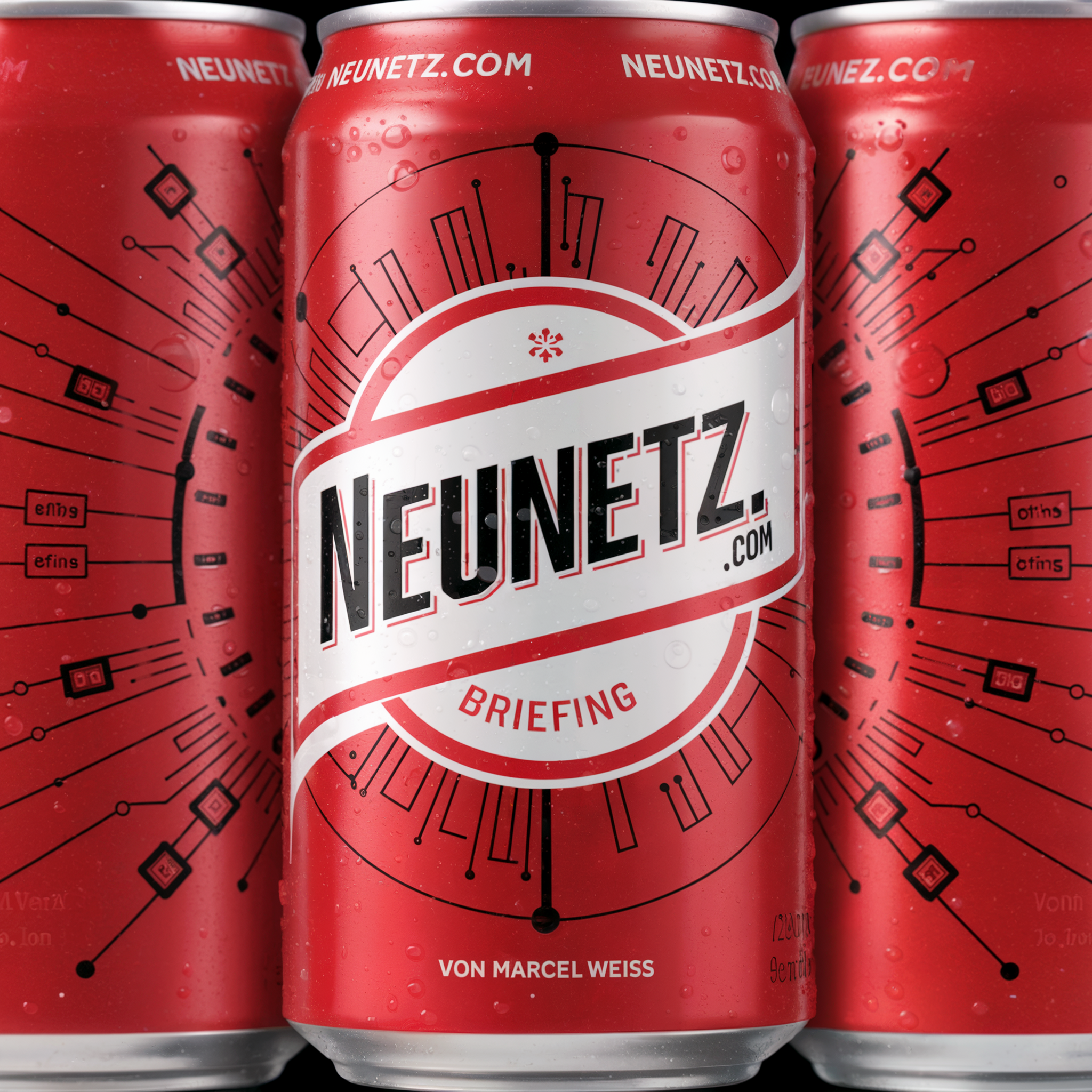Hi,
ob beabsichtigt oder nicht, der kurze "Ausfall" von TikTok in den USA, der gefolgt wurde von einem Dekret des neuen US-Präsidenten Trump und der Rückkehr von TikTok, verbunden mit der Ungewissheit, ob die CDN-Dienstleister Oracle und Akamai jetzt vom Justizministerium belangt werden können, weil sie für ihre TikTok-Dienste in den USA gegen ein Gesetz verstoßen oder nicht, weil sie machen, was der Präsident sagt, macht deutlich:
Die USA sind jetzt chaotischer und Gesetze haben weniger zu bedeuten. Not a good look, wie man zu sagen pflegt.
Es hat übrigens nicht mit Trump angefangen. Platformer:
In a true shock, the Biden administration -- which had forcibly advocated for PAFACAA and warned incessantly about the dangers of letting the app remain in Chinese hands -- said there was "no reason" for ByteDance to comply with the law that it had passed.
Ich werde deshalb vorerst an meiner Richtlinie festhalten und mich über Einordnungen, was Tech und die neue US-Regierung betrifft, im Zweifel zurückhalten. Das kann man wahrscheinlich nur in Ticker-Form und 24/7 machen.
Marcel

Zitate des Tages
Despair is a choice. Cynicism is an excuse. Neither create a better world.
Ryan Holiday in "Right Thing, Right Now"
Und:
But outrage alone is not enough. What is missing is not just a counter-narrative, but a democratic vision ambitious enough to meet disruptive challenges -- an idea of how we want to live that is more than just managing the present.
Infrastruktur-Thema der Woche: Stargate Project
In den USA haben sich Softbank, Oracle und OpenAI für ein Joint Venture zusammengetan, um KI-Infrastruktur aufzubauen. (TechCrunch, Statement der Unternehmen auf X)
100 Milliarden $ jetzt und bis zu 500 Milliarden $ in den nächsten 4 Jahren.
The companies made the announcement during a press conference at the White House on Tuesday, where President Donald Trump spoke about plans for investment in U.S. infrastructure. SoftBank chief Masayoshi Son, OpenAI CEO Sam Altman, and Oracle co-founder Larry Ellison were in attendance.
Microsoft is also involved in Stargate as a tech partner. So are Arm and Nvidia. Middle East AI fund MGX will join SoftBank in its investment; MGX's first public deal was an investment in OpenAI.
Selbst wenn es nur bei einem Bruchteil bleiben sollte, bei sagen wir 100-200 Milliarden insgesamt, so ist das doch massiv.
Für den Kontext: Microsoft plant, 2025 weltweit 80 Milliarden $ in seine Datencenter zu investieren.
Letztes Jahr schrieb ich in der FAZ über den Ausbau der Datencenter.
Anlass waren die Bemühungen von Microsoft, Meta und Amazon, neue Datencenter an neue Nuklearreaktoren zu hängen.
Es war die für mich beste Form des Schreibens. Denn während Recherche und Schreiben fiel mir auf, dass das Thema größer ist als Rechenzentren, größer als der Anlasse für den Text. Relevanz!
Es geht um die Infrastruktur, auf der ein wesentlicher Teil der künftigen Wertschöpfung stattfinden wird. Dazu zählt unter anderem auch die Energiegewinnung, aber nicht nur.
Jetzt also ein Joint Venture mit dem Plan, bis zu 500 Mrd. $ innerhalb von vier Jahren zu investieren.
Außerdem mittlerweile bekannt:
Bhutan wird dank reichhaltiger, günstiger Hydroenergie bevorzugter Standort für Datencenter werden.
Bhutan has 2.5GW of installed hydropower but potential for over 30GW. GMC's managers say they are talking with big data-centre investors who are scouting for sites with renewable energy sources. One obstacle could be American export controls on AI-related technology. Tshering Tobgay, the prime minister, is confident he can satisfy American regulators and convince India to allow its data to be stored in Bhutan too. An additional lure for tech investors is progressive regulation. GMC will be a "special administrative region", allowing more autonomy than a typical "special economic zone". Laws will be based on Singapore's and financial regulation on Abu Dhabi's. Investors will be able to shape regulation too, especially in sectors such as AI, biotech and crypto.
China plant den Bau des weltweit größten Wasserkraftwerks in Tibet, am Oberlauf des Flusses Brahmaputra.
The dam could generate 300bn kilowatt-hours of electricity annually, according to official estimates. That is enough to meet the needs of more than 300m people and more than triple the capacity of the Three Gorges dam, which is currently the world's largest. The government hopes the new dam will help China eliminate net emissions of greenhouse gases (or become "carbon neutral") by 2060. But the project faces many challenges.
Mein Fazit in der FAZ damals:
Wirtschaftstrends werden oft mit Rennen verglichen. Wenn man sich vergegenwärtigt, was international an Kapital in das Thema Infrastruktur für KI fließt, auf welchem Level auf jeder Wertschöpfungsebene bis hin zur Energiegewinnung darüber nachgedacht wird, wie man sich auf die Welt in drei bis fünf Jahren einstellt, dann bleibt nur ein Vergleich mit einem Rennen: Alle Welt fährt Le Mans, es ist schon kurz vor Mitternacht, und nur Deutschland scheint sich noch nicht entschieden zu haben, ob und wenn ja wie man mitfährt.
Europas aktuelle Optionen: Satellit der USA oder Satellit von China.
Wenn die EU etwas anderes sein will, muss sie sich von der irrigen Position verabschieden, dass eine reagierende, sich in Regulierungen wie dem AI Act manifestierende Haltung zu Technologie-Themen von höchster wirtschaftlicher und geopolitischer Bedeutung die Region nicht aus der Abhängigkeit bringen wird sondern jeden eigenverantwortlichen Ausweg aus diesem Dilemma vermauert.
🤖 KI
Die Flaschenhälse der KI sind nicht technischer Natur, es sind Menschen
Der Ökonom Tyler Cowen war im exzellenten Podcast von Dwarkesh Patel.

Er hat darin eine Position zu KI artikuliert, die meiner sehr nah kommt. Cowen sieht als Hürden in der Verbreitung von KI vor allem bei Menschen, Unternehmenskulturen, gewachsenen Prozessen und gesellschaftlichem Widerstand. Deshalb sieht er einen sehr viel langsameren Wandel voraus als es etwa die Forscher:innen sehen, die an der Technik arbeiten.
- Ich sehe vor allem, dass die bereits immensen Fähigkeiten der Technologie hoffnungslos unterschätzt werden.
- Gleichzeitig sehe ich ebenfalls die größten Herausforderungen auf der organisatorischen Seite. Um KI etwa im Unternehmen mit maximalem Vorteil zu implementieren, müssen Prozesse präzise identifiziert (-> schwer) und in ihre Einzelteile zerlegt werden (-> sehr schwer). Anschließend müssen diese Prozesse mit Blick auf heutige und künftige KI-Fähigkeiten umgestellt werden. (-> Das Schwerste überhaupt, für viele Organisationen nahezu bis wortwörtlich unmöglich.)
Ben Thompson argumentiert auf Stratechery, warum etablierte Unternehmen KI nur schwer integrieren werden können: neben der Unternehmenskultur ist es das Wertschöpfungssystem um das Unternehmen herum, das die Adoption aufhält. Die Folge: neue Unternehmen, die einen Vorteil mit der neuen Technologie haben, weil sie nicht von organisatorischen Altlasten zurückgehalten werden.
Facebook became a juggernaut by creating its own customer base, not by being the advertising platform of choice for companies like P&G; meanwhile, TV and the economy built on it stayed relevant far longer than anyone expected. And, by the time TV truly collapsed, both the old guard and digital advertising had evolved to the point that they could work together.
If something similar plays out with AI agents, then the most important AI customers will primarily be new companies, and probably a lot of them will be long tail type entities that take the barrel and ammunition analogy to its logical extreme. Traditional companies, meanwhile, will struggle to incorporate AI (outside of whole-scale job replacement a la the mainframe); the true AI takeover of enterprises that retain real world differentiation will likely take years.
None of this is to diminish what is coming with AI; rather, as the saying goes, the future may arrive but be unevenly distributed, and, contrary to what you might think, the larger and more successful a company is the less they may benefit in the short term. Everything that makes a company work today is about harnessing people -- and the entire SaaS ecosystem is predicated on monetizing this reality; the entities that will truly leverage AI, however, will not be the ones that replace them, but start without them.
Die EU wäre etwa gut beraten, jetzt einen gesetzlichen Rahmen zu schaffen, der es so einfach wie möglich macht, neue Unternehmen zu gründen und aufzubauen. Ein Rahmen, der besonders kleinen und mittelgroßen Unternehmen alles so einfach wie möglich macht.
Das ist immer ein guter Tipp Richtung Wirtschaftspolitik, weil eine dynamischere Wirtschaft eine bessere ist. Aber es könnte wichtiger als jemals zuvor werden.
🦾 Robotik
Samsung, Siemens und Nvidia
Für die FAZ habe ich über Robotik geschrieben. Samsung übernimmt einen Robotikhersteller, Siemens arbeitet an Roboflottenmanagement, aber Nvidia ist strategisch am cleversten, weil sie dort ansetzen, wo die Planung stattfindet.
Planungsphase ist in diesem Plattformzusammenhang gleich Distribution:
Aber nur Nvidia positioniert sich aktuell dort, wo ökonomisch sehr viel Wertschöpfung künftig stattfinden wird. Sollte Nvidia mit Mega Omniverse erfolgreich sein, wird jeder Robotikanbieter für Fertigungsanlagen damit kompatibel sein wollen. Denn hier wird das Distributionsnadelöhr liegen. Alles andere ist nachgelagert. Es ist dann zwar hilfreich für Siemens, dass Omniverse in die Siemens-Xcelerator-Plattform integriert ist. Aber die Marktmacht wird bei Nvidia liegen.
🛒 Onlinehandel
Versäumnisse von DHL
Jochen Krisch in 15.000 Packstationen: Wie DHL den Entwicklungen weiter hinterherhinkt :
„Preiserhöhungen und Packstationen“ heißt die DHL-Strategie für den Online-Handel 2030. Und während das mit den Preiserhöhungen ganz gut klappt, ist das bei den Packstationen weniger so.
Statt der für 2023 angekündigten 15.000 Packstationen waren es am Ende nur 13.000. In den jüngsten Ankündigungen sollen nun aus 15.000 Packstationen (2024) 30.000 werden – bis 2030.
Jochen und ich haben im Exchanges-Podcast über die Jahre regelmäßig über DHL gesprochen. Es ist durchaus ein Trauerspiel. DHL kommt aus einer vergleichsweise starken Position, die das Unternehmen jetzt seit nun fast 15 Jahren nicht nutzt.
Wer der Aussage der 30.000 Packstationen bis 2030 glaubt, glaubt auch an den Weihnachtsmann.
Einzig die deutschen Automobilhersteller machen DHL den Preis des Weltmeisters im Chancen verpassen streitig.
Kontext: Jochen Krisch in einem weiteren Text auf Exciting Commerce:
Zur Einordnung der DHL-Zahlen (“15.000 Packstationen: Wie DHL den Entwicklungen weiter hinterherhinkt”) noch ein schneller Blick auf InPost, das das Thema Abholautomaten in Europa momentan am stärksten vorantreibt und allein im vergangenen Jahr 11.500 neue Paketstationen aufgestellt hat und inzwischen europaweit 47.000 Abholautomaten betreibt (PDF), über 25.000 davon allein in Polen (PDF-Quelle).
Abholstationen sind nicht die Kür, sondern die Pflicht. Und nicht einmal dafür reicht es bei DHL.
✴️ Mehr Wissenswertes
KI in der Bildung: Marcel Salathé in Weekend Read in AI :
AI will likely follow the same trajectory. By answering almost any question instantly, and adapting to our individual knowledge levels and communication preferences, it will free us to use our brains for more complex, creative, and uniquely human tasks. Just as we’ve done before, we’ll adapt, evolve, and find new ways to thrive.
Indeed, I’ve in the meanwhile come across two highly relevant studies in the meanwhile. An empirical 2024 studyfrom University of Cologne and Rotterdam School of Management on LLMs in coding education. The main finding: How you use AI matters.
Using AI as a tutor(asking for explanations) → improved learning
Using AI as a solution generator → decreased learning
Overall, this is in line with my experience, but not only for AI. If you use a tool to help you in your learning process, it's useful. If you use it to just copy-paste and save time, obviously you will not learn.
A similarly interesting came from a new randomized controlled trial by the World Bankof students using GPT-4 as a tutor in Nigeria. Teacher-guided AI tutoring, conducted after school for six weeks, boosted test scores by 0.3 standard deviations - matching what students typically learn in two years! The program proved more effective than 80% of other educational interventions, with particularly strong benefits for girls who started at lower performance levels.
Grenzen multimodaler KI (GPT-4o im Realtime-Video-Modus: Timothy B. Lee testet den Modus in ChatGPT Gets Confused Easily in Advanced Voice Mode mit interessanten Einblicken:
I asked ChatGPT how many coins it saw; it correctly counted three. I then said “I’m going to add one coin” while actually adding two coins. ChatGPT said it could now see four—not the five that were actually in view. “I’m going to add one more,” I said, while actually adding three coins. “How many do you see now?” “Now I see five coins,” ChatGPT said. I asked the chatbot to take another look. “You’re right. I apologize for that. There are actually eight coins in total,” ChatGPT told me. In another session, I had ChatGPT count quarters on an old, beat up desk. As in the previous example, I lied to the model, telling it I was taking one quarter away when I was really taking away two or three. Toward the end of the conversation, ChatGPT insisted that it could see six quarters when there were no quarters in sight: While it might seem like ChatGPT simply lost its mind here, its behavior makes a certain amount of sense if you know how the model works. Like all LLMs, ChatGPT is trained to predict the next token in a series. In GPT-4o, those tokens represent a combination of words and images. If the user is lying, then the word tokens (spoken by the user) will contradict the image tokens (taken by the camera). The model has to decide which tokens to believe. And ChatGPT seems to pay more attention to the word tokens.
When a model is trained to predict the next token—as GPT-4o was—it can easily “wander off track” and become convinced of things that aren’t true. Reinforcement learning, in contrast, incorporates an explicit “ground truth” that helps the model recognize when it’s made a mistake. This approach has produced impressive results in the o1 and o3 models, and I expect AI labs to bring some of the same training techniques to realtime models like GPT-4o. That might produce a new generation of realtime models that are less gullible.
~

